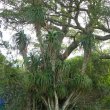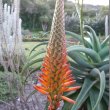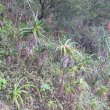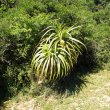| Botanical Name |
|
| Family |
Aloeaceae - The aloe family. |
| Pronunciation |
|
| Common Name(s) |
Afrikaans: Fransaalwyn; Fransaalwee; Garaa
IsiXhosa: ikhala; ingamdodlo; umhlaba; unomaweni; intelezi
|
| Plant Group |
- Succulent A plant having fleshy stems or leaves often adapted to dry conditions.
|
| Plant Size |
- Very large
| Tree | Over 25m |
| Shrub | Over 4m |
| Perennial/ground cover | Over 1m |
| Bulb | Over 1.2m |
| Succulent | 1.5m to 2m |
|
| Position |
- Canopy Shade Canopy shade is found below closely grown trees where some light filters through. Ideal for the protection of herbaceous plants.
- Dry Shade Shady areas where soil has poor water retention or are dependent on rain for their moisture needs.
- Light or Dappled Shade Found below trees with sparse, open foliage. Ideal for the protection of herbaceous plants.
- Partial Shade The area is in shade for part of the day and in full sun for part of the day.
- Sun The area is in full sun for all or most of the day, all year round.
|
| General Information |
- Drought Tolerance: High The plant is well adapted to arid conditions; it can survive long periods of drought and high temperatures without extra water.
- Evergreen Plants that have leaves all year round.
- Frost: Half-hardy The plant is able to survive low temperatures and some frost but requires protection against severe frost.
- Roots Non-invasive Safe to plant near pools, paving, walls or buildings.
- Thorns / Spines / Prickles Thorn: A hard, woody, pointed branchlet.
Spine: A modified leaf forming a hard, sharp-pointed outgrowth.
Prickle: A small, sharp-pointed outgrowth growing from the bark of the plant.
- Water Wise Plant species originating from low rainfall regions that require less water to survive and thrive than other plant species.
|
| Specific Information |
Aloe pluridens is a tall attractive plant with gracefully arching leaves arranged in spiralled rosettes. The long narrow leaves can grow up to 70 cm long, are bright green to yellowish-green in colour and have firm, closely spaced, small pale green to white teeth along the margins. The old leaves droop down and become papery with age, eventually falling off and leaving the lower stem bare. The leaf sap has a sharp acrid smell reminiscent of rhubarb.
In cultivation Aloe pluridens reaches to about 2 to 3 meters, while in its natural habitat it can reach up to 5 or 6 meters, and protrudes above the surrounding bush. It may be either single-stemmed or branched and is known to bear a number of small plantlets near the base of the stems. The rosette bears up to three flower stems, each with up to four branches.
|
| Ad Break |
|
| Flowers |
| Description |
tubular blooms in a cone-shaped head
|
| Season |
- Autumn to Winter Plants will seldom bloom for the entire season as given in the list, but should flower during a period within these parameters.
|
| Colour |
|
| Growth Rate |
- Moderate Specifying growth rate can be very misleading as there is considerable variation of growth rate depending on type and species of plant, available water, supplementary feeding, mulching and general care, as well as the plants suitability and adaptability to the garden environment.
|
| Plant Uses |
- Accent or Focal Point A plant used to attract the attention because of its colour or form.
- Attracts bees, butterflies or other insects This plant attracts insects which can be food for birds or other creatures in your garden.
- Attracts Birds This plant will attract birds.
- Boundary A plant useful for planting around the edges of the property to form a green or colourful backdrop, an impenetrable hedge, to hide walls or create privacy.
- Suitable for coastal gardens Plants adapted to dry, sandy soil, forceful wind, limited rainfall and intense sunlight.
- Wild Garden An indigenous garden planted for the benefit of wildlife and birds. Provides food, water, a variety of mini-biomes and no poisonous chemicals are used.
|
| Distribution and Habitat |
in a broad coastal belt from Humansdorp to East London in the Eastern Cape, and small communities up to Durban in KwaZulu Natal, in dense thicket vegetation.
|
| Planting Suggestions |
Aloe pluridens is relatively easy to grow and makes a spectacular garden subject. In its natural thicket environment, the surrounding bushes protect the stems from sun and cold. Bear this in mind when choosing a position in the garden - it is not at its best when exposed to extreme heat or cold without some surround vegetation. In areas where frost is experienced it should be planted in semi-shade where it is protected. Aloe pluridens is easily propagated by seed, cuttings or truncheons.
|
| Medicinal Uses |
|
| Ad Break |
|












Discuss this plant
Share knowledge, ask a question or give an experience.